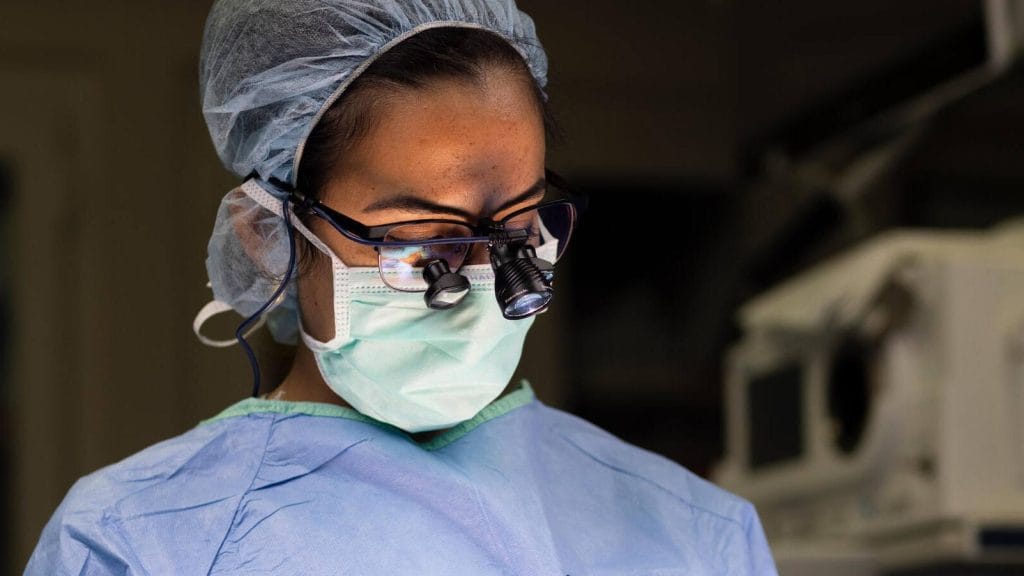Overview
Infectious diseases are illnesses that happen when tiny living beings get inside the body and multiply. Bacteria, viruses, fungi and parasites are examples of organisms that can cause illness. Many organisms live in and on our bodies. They're too small to see with the eyes. And they're often harmless or even helpful. But under certain conditions, some organisms can cause disease.
Some infectious diseases can pass from person to person. Some spread through insects or other animals. You may get others by eating contaminated food or water. Or you could be exposed to germs around you, such as those on surfaces.
Symptoms of infectious diseases vary depending on the cause of the infection. But they often include fever and tiredness. Rest and home remedies may clear up mild infections. But other infections can be life-threatening, and treatment could involve hospital care.
Many infectious diseases, such as measles and chickenpox, can be prevented by vaccines. And other illnesses, such as COVID-19, might make you less sick if you get vaccinated. Frequent and thorough hand-washing also helps protect you from most infectious diseases.
Symptoms
Each infectious disease has its own specific symptoms. But some illnesses share general symptoms, such as:
- Fever.
- Faster heartbeat.
- Diarrhea.
- Tiredness, also called fatigue.
- Muscle aches.
- Coughing.
- Night sweats.
When to see a doctor
Call your healthcare professional if you:
- Have been bitten by an animal.
- Have trouble breathing.
- Cough for more than a week, or you cough up yellow-green mucus or blood.
- Have severe headache with fever.
- Get a rash that's widespread, comes with a fever, leaks fluid, or feels painful or warm.
- Have unexplained or long-lasting fever.
- Have sudden vision problems.
From Mayo Clinic to your inbox
Causes
Infectious diseases can be caused by:
- Bacteria. These one-cell organisms are responsible for illnesses such as strep throat, urinary tract infections and tuberculosis.
- Viruses. These microscopic germs are even smaller than bacteria. They cause many diseases, including the common cold, COVID-19 and HIV.
- Fungi. These cause many skin diseases, such as ringworm and athlete's foot. Other types of fungi can infect the lungs, eyes, liver or brain.
- Parasites. The disease malaria is caused by a tiny parasite that is spread by a mosquito bite. Other parasites may be spread to people from animal feces.
Direct contact
An easy way to catch most infectious diseases is by coming in contact with an infected person or animal. These diseases can be spread through direct contact such as:
-
Person to person. This can happen when an infected person touches, kisses, or coughs or sneezes on someone who isn't infected.
These germs also can spread through body fluids during sexual contact. The person who passes the germ may have no symptoms.
- Animal to person. Being bitten or scratched by an infected animal — even a pet — can make you sick. In extreme situations, it can be deadly. Handling animal waste can raise the risk of catching a disease too. For example, you could get an infection from a parasite by scooping your cat's litter box without wearing disposable gloves or washing afterward. Pregnant people and others with weakened immune systems are especially at risk of this infection, called toxoplasmosis.
- Mother to unborn child. A pregnant person may pass germs that cause infectious diseases to the unborn baby. Some germs can pass through the organ that sends oxygen and nutrients to an unborn child, called the placenta. Germs in the vagina also can be spread to the baby during birth. There also is a small risk of germs passing through breast milk. This risk is higher if you buy breast milk online from a milk-sharing site, or if your baby is fed someone else's breast milk.
Indirect contact
Disease-causing germs also can be passed by indirect contact. Many germs can linger on surfaces such as tabletops, doorknobs or faucet handles.
For example, say you touch a doorknob that's been handled by someone ill with the flu or a cold. You could pick up the germs that person left behind. If you then touch your eyes, mouth or nose before washing your hands, you may become infected.
Bug bites
Bugs such as mosquitoes, fleas, lice or ticks can harbor germs and spread them to people with their bites. Mosquitoes can carry the malaria parasite or West Nile virus. Deer ticks may carry the bacterium that causes Lyme disease.
Food contamination
Disease-causing germs also can infect you through contaminated food and water. For example, the bacterium Escherichia coli (E. coli) is present in or on foods such as undercooked hamburger or unpasteurized fruit juice.
Risk factors
Anyone can catch infectious diseases. But you may be more likely to get sick if your immune system isn't working properly. This may happen if:
- You take steroids or other medicines that suppress your immune system, such as chemotherapy for cancer.
- You have HIV or AIDS.
- You have certain types of cancer or other conditions that affect your immune system.
Other risk factors include malnutrition and hospital procedures that insert tubes in a vein to give medicine or other treatments.
Complications
Some infectious diseases cause minor health problems, such as the common cold. Others can become life-threatening, such as pneumonia and meningitis. A few types of infections have been linked to a long-term higher risk of cancer:
- Human papillomavirus is linked to cervical cancer.
- Helicobacter pylori is tied to stomach cancer and peptic ulcers.
- Hepatitis B and C have been linked to liver cancer.
The germs that cause some infectious diseases also may become inactive, only to cause problems again in the future. For example, someone who's had chickenpox may develop shingles much later in life.
Prevention
Follow these tips to lower the risk of infection:
- Wash your hands. Scrub them with water and soap for at least 20 seconds. Or use a hand sanitizer with at least 60% alcohol. Washing is very important before and after you prepare food, before you eat, and after you use the toilet or touch garbage. It's also key to wash after you handle pets, their food or their waste. Be sure to scrub your hands after you care for someone who's sick, before and after you treat a cut, and after you blow your nose too. Also, try not to touch your eyes, nose or mouth with your hands. That's a common way for germs to enter the body.
- Get vaccinated. Vaccination can greatly lower your chances of getting many diseases. Make sure to keep up to date on your recommended vaccinations, as well as your children's.
- Stay home when ill. Don't go to work if you are vomiting, have diarrhea or have a fever. Don't send your children to school if they have these symptoms, either. And wear a mask if you're sick or if you need to take care of someone who's sick with COVID-19.
- Prepare food safely. Keep counters and other kitchen surfaces clean when you prepare meals. Cook foods to the proper temperature, using a food thermometer to check for doneness. For ground meats, that means at least 160 F (71 C); for poultry, 165 F (74 C); and for most other meats, at least 145 F (63 C). Also, quickly refrigerate leftovers — don't let cooked foods remain at room temperature for long periods of time.
- Have safe sex. Use a condom each time you have sex if you or your partner has a history of sexually transmitted diseases (STDs). It's also important to use condoms if either of you has more than one sex partner. Be sure to get tested for STDs, and share the results with each other.
- Don't share personal items. Use your own toothbrush, comb and razor. Don't share drinking glasses or dining utensils, especially if someone seems sick.
- Travel wisely. If you're traveling out of the country, talk to your healthcare professional about any special vaccinations you may need. Examples include vaccines for yellow fever, cholera, hepatitis A or B, or typhoid fever.
History of infectious disease outbreaks and vaccines timeline.
Learn about the history of major disease outbreaks, epidemics and pandemics, as well as the impact vaccines and research had on many infectious diseases.
Find out more at History of infectious disease outbreaks and vaccines timeline.




